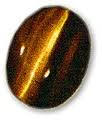Welcome back to the next installment in the series that is Chalcedony. We have covered many different types of chalcedony in the previous series. Today we will be discussing just Agate. There are many types of agate and we did cover some in previous posts. Today I would like to go more in depth with agate. As in previous posts all the information that I used to write this blog is from the book Gemstones of the World by Walter Schumann. So let's talk agate!
The colours of agate are all colours banded. The colour streak is white and the Mohs hardness is 6.5-7. The density is 2.60-2.64 and there is no cleavage. The crystal system is trigonal microcrystalline and the chemical composition is silicon dioxide. The transparency is translucent to opaque.
 |
| agate with great banding |
The origins of agate are usually ball or almond shaped nodules and have a wide range of sizes. They can be anywhere from a fraction of an inch to having a circumference of several yards. It is thought that rhythmic crystallization is how the bands are formed. There are many theories as to how agate is formed. The old theory was that the bands were formed by crystallizing slowly in hollows that were formed by gas bubbles from a siliceous solution. The more recent theory is that the bands are formed simultaneously with the matrix rock. What this means is that when the liquid drops of silicic acid cool with the cooling rock this produces a layered crystallization from the outside. There is a new theory that postulates that colloid solutions (substances with very fine sized grains) flow into the agate hollows and forms the bands of various thickness. There are times when the inner cavity is not filled with agate but with crystals. Some examples of this are rock crystal, amethyst and smoky quartz. When only the centre is filled it is called a druse but if the inside is completely filled then it is called a geode.
 |
| Nice selection of agates |
Agates can be found in Germany which were very important deposits in the 19th Century but these deposits are mostly gone now. The agates in Germany could not be dyed as they came in beautiful colours of grey, pink, red, yellow, brown and pale blue naturally. The most important deposits today come from Brazil and Uruguay. Other deposits can be found in Australia, China, India, Caucasus, Madagascar, Mexico, Mongolia, Namibia, and the United States.
I hope everyone enjoyed learning about agates today. I had fun writing about it today and I learned alot as well. Please let me know how I am doing. I would love to hear from you. Drop me a line. Until next time.
The rare gem lady




















